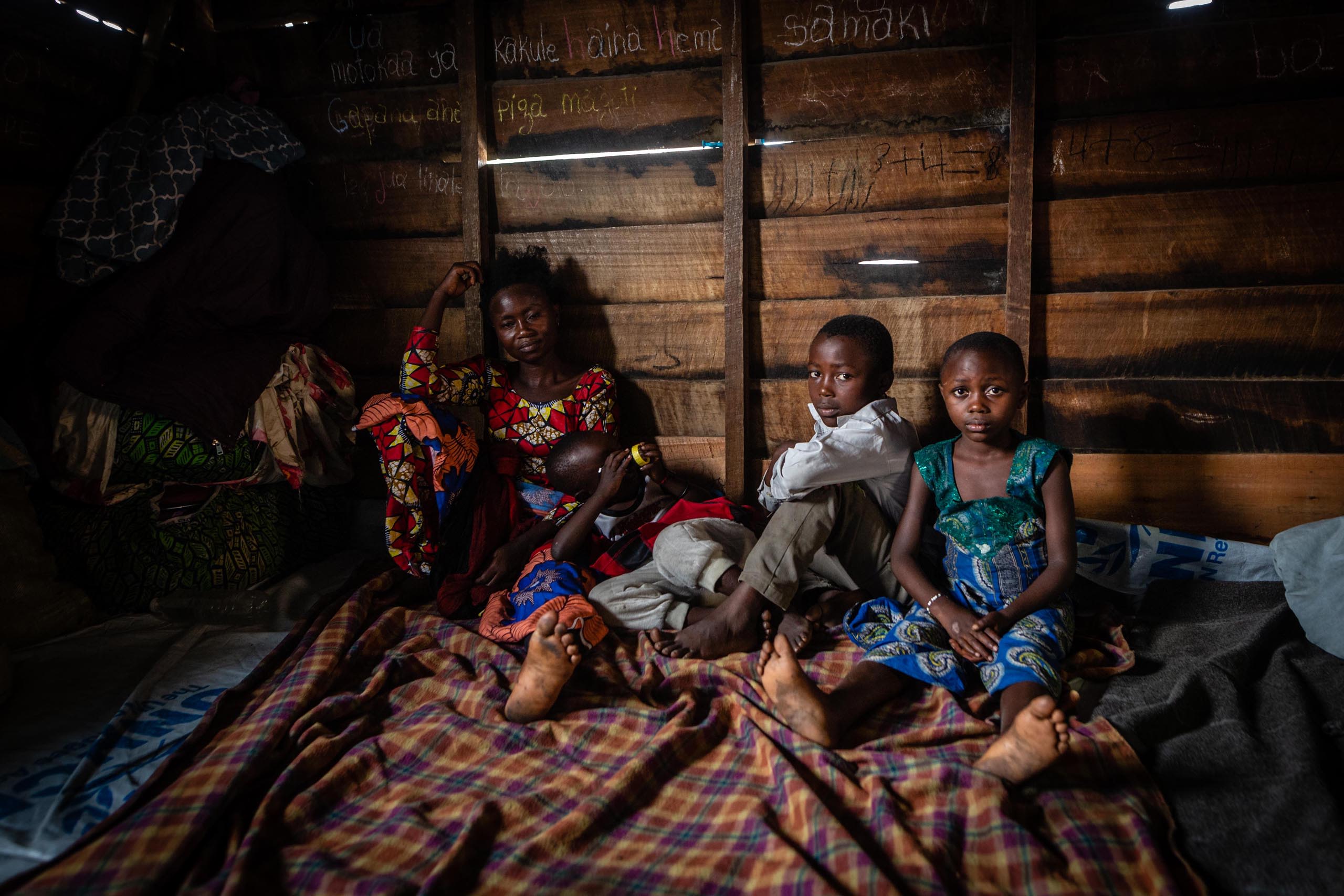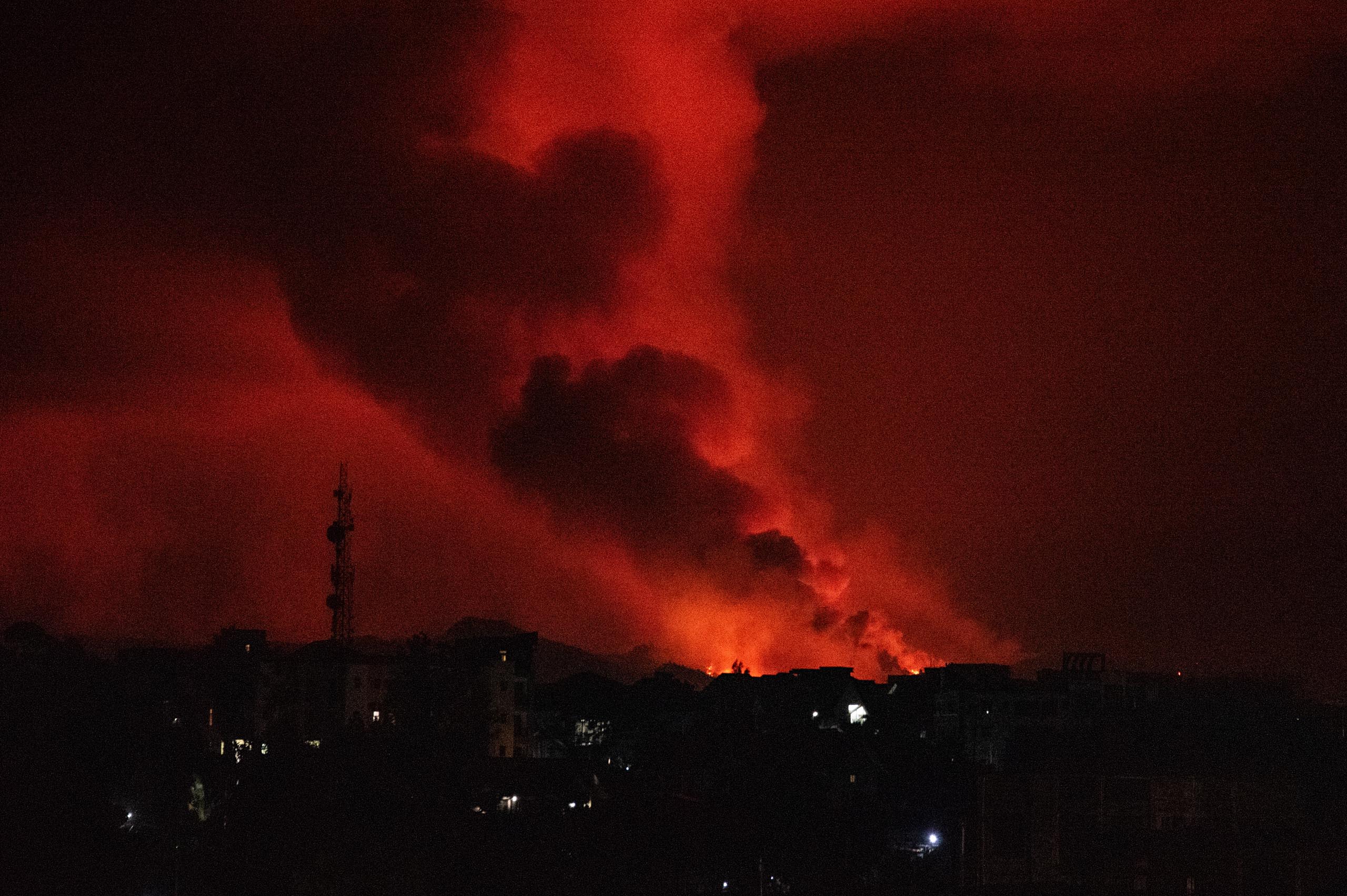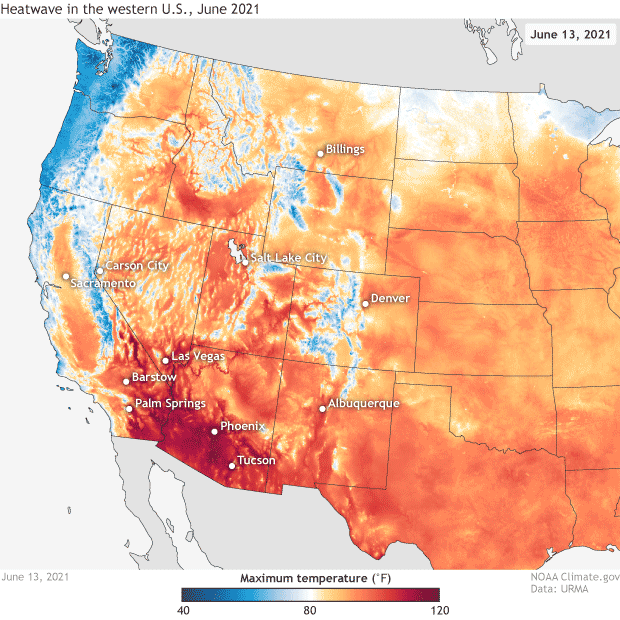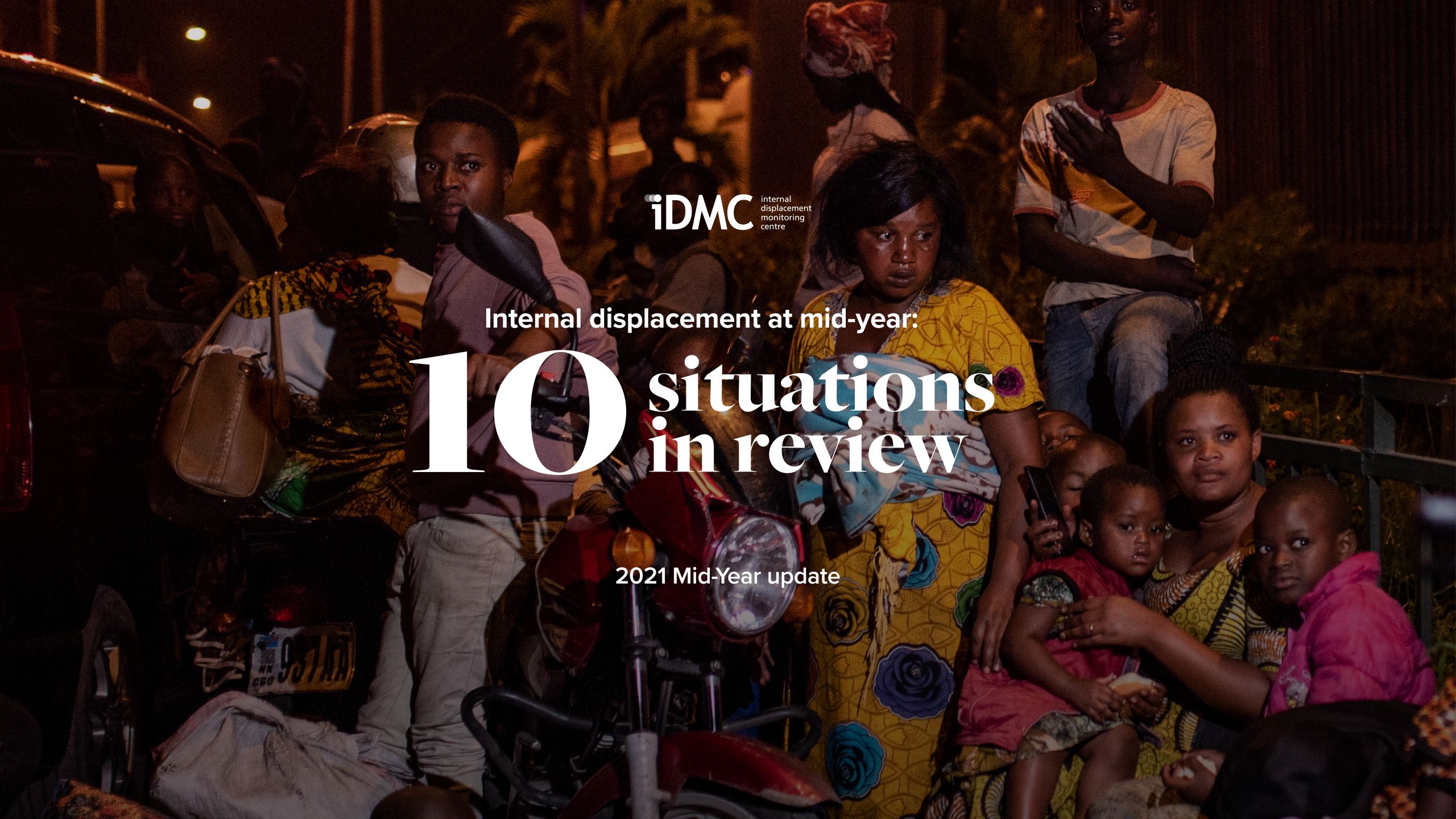
In IDMC's 2021 mid-year update, we focus on ten situations which have displaced high numbers of people during the first half of the year, and which will need to be carefully monitored over the coming months. From armed attacks and violent clashes, to flooding and wildfires, conflict and disasters uprooted people across the world between January and June. The Covid-19 pandemic has aggravated vulnerabilities and strained resources, reinforcing the need for collective efforts to help people the world over in finding lasting solutions to their displacement.
Afghanistan
Afghanistan’s conflict intensified during the first half of 2021 as US and NATO forces began their final withdrawal on 1 May and the Intra-Afghan peace talks stalled. Between May and June, a nationwide Taliban offensive tripled the number of districts under its control and began threatening provincial capitals, with the northern provinces of Kunduz and Baghlan and the eastern province of Laghman particularly affected.
The increased fighting between the Taliban and the Afghan National Security Forces displaced an estimated 338,000 people from 31 of the country’s 34 provinces during the first half of the year. Many have sheltered in urban areas, including public buildings where they lack access to water and sanitation. The first six months of 2021 also saw more than 611,000 Afghans return to the country, surpassing the total for the same period in 2020, which itself saw record-breaking returns. The United Nations has warned of high humanitarian needs among internally displaced people (IDPs), especially as access constraints and funding shortfalls have disrupted humanitarian programming.
Covid-19, disasters, and Afghanistan's vulnerability to climate change have further complicated the situation. Between January and June, 22,500 new disaster displacements were recorded, linked primarily to floods. Heavy rains and floods triggered an estimated 16,000 displacements across 14 provinces in May. Drought conditions are likely to lead to further displacement in the coming months. The pandemic has compounded the vulnerability of IDPs who now face a decrease in daily wages and a contracting economy.
Displacement has surged again since June, with approximately 194,000 people displaced in the month of July alone. The Taliban swept across the country in August, capturing all major cities in ten days, culminating with Kabul on 15 August. At the time of reporting, the situation remains unpredictable.
Background photo 1: Saira and her family have been forced from their home in Kandahar due to ongoing conflict, the second time in ten years. © Enayatullah Azad/NRC
Background photo 2: Families flee the Taliban from northern provinces into Kabul. © Enayatullah Azad/NRC
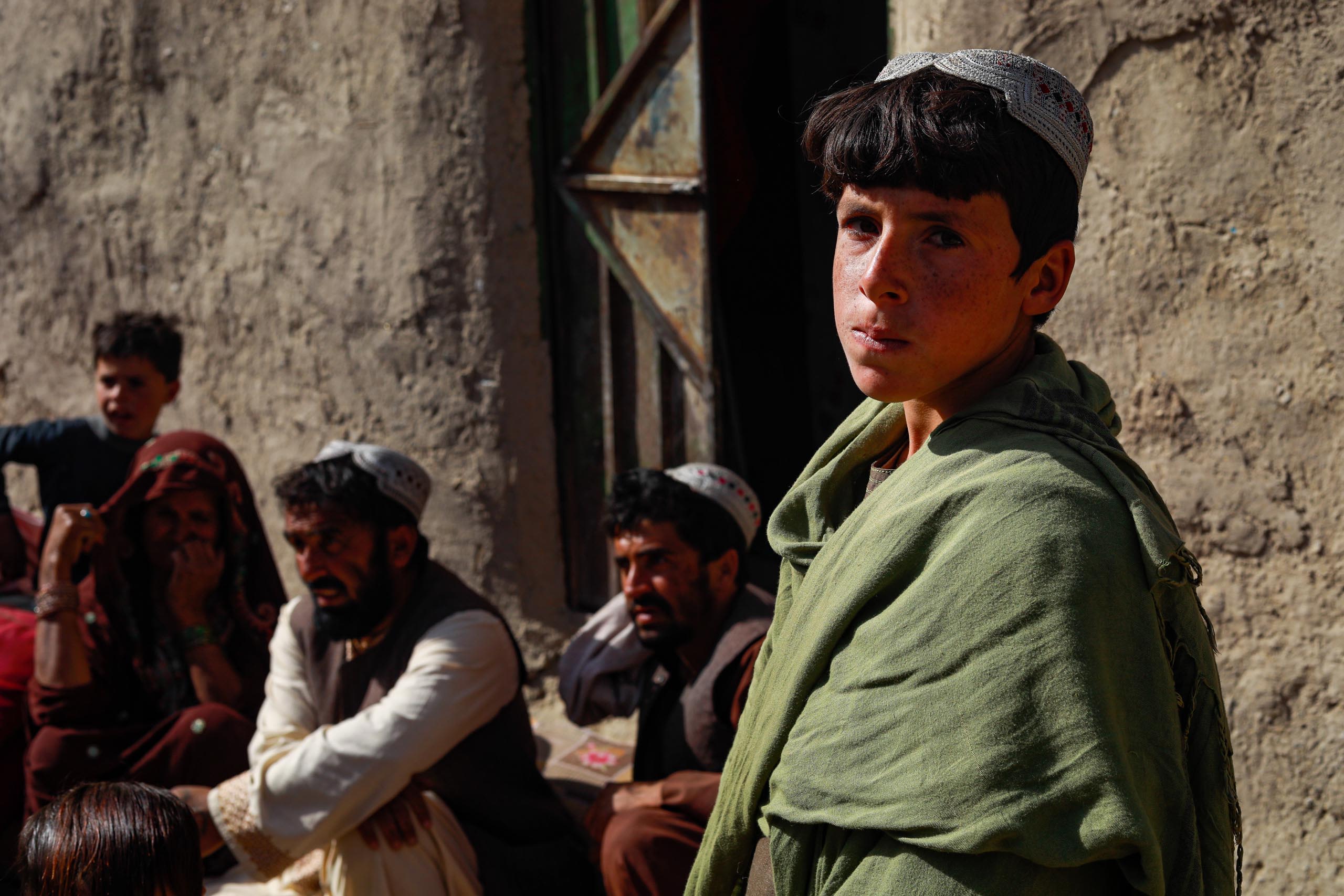
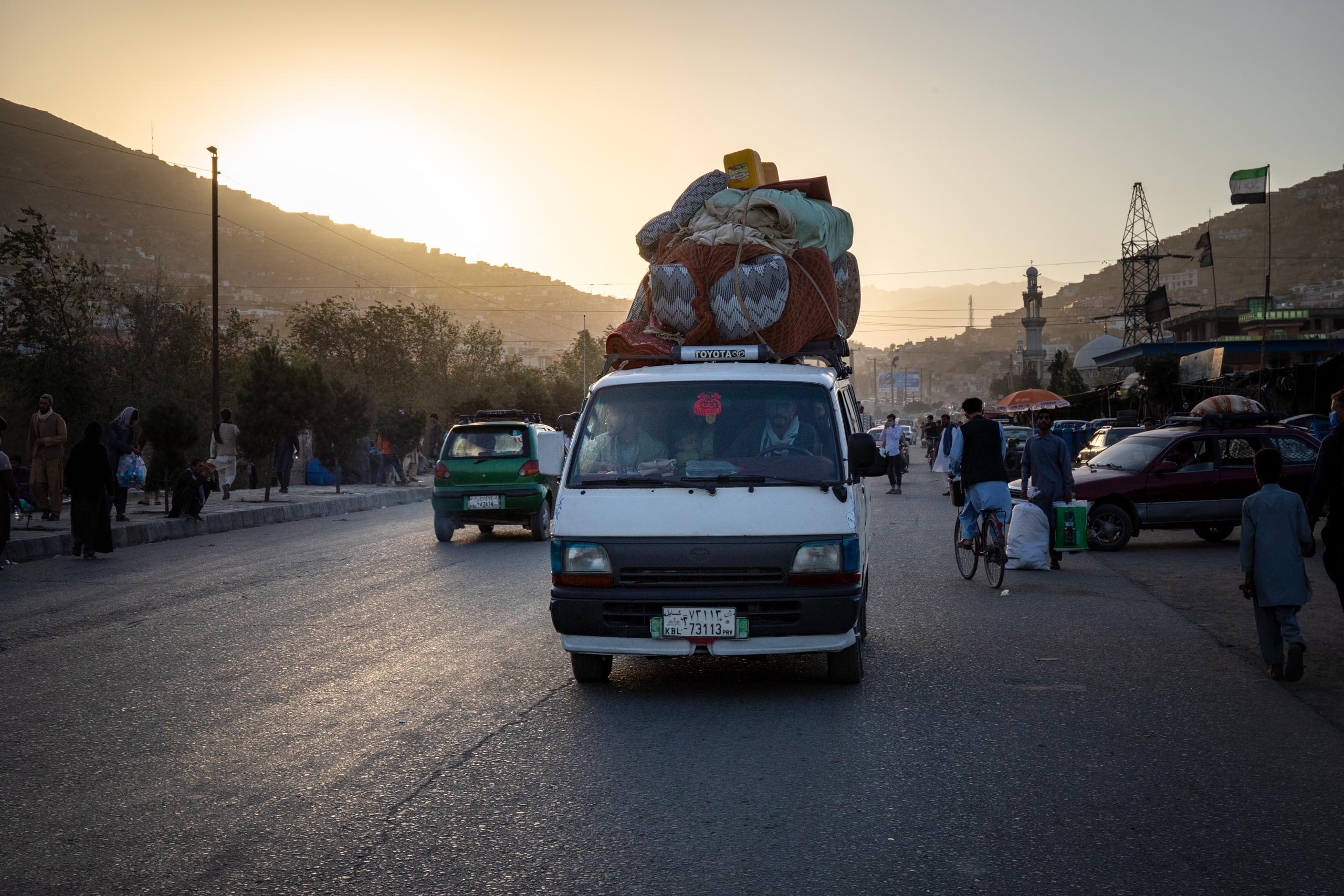
The Democratic Republic of the Congo
Conflict and violence continued to displace hundreds of thousands of people in the DRC during the first half of 2021. IDMC recorded 728,000 new displacements in this period. Mirroring previous trends, the eastern provinces of North Kivu and Ituri have been the most affected. In North Kivu, over 265,000 displacements took place between January and June. Beni territory was also hit hard by ongoing clashes between government forces (FARDC), supported by the UN mission (MONUSCO), and non-state armed groups (NSAGs), the most prominent of which is the Allied Democratic Forces (ADF).
Intercommunal violence continued in Ituri. Notably, the association of Lendu militias, known as the Coopérative de développement économique du Congo (CODECO), continued its attacks against civilians, including the Hema and the Alur communities, as well as the military. Violence and displacement have been accentuated by the ADF, which started carrying out increasingly deadly and indiscriminate attacks since the start of 2021. Nearly 6,000 people were forced to flee in just two days on May 30 - 31 as a result of attacks by the ADF in Tshabi and Boga villages in Irumu territory. Several camps for internally displaced people (IDPs) were attacked, forcing them into secondary displacement. Some humanitarian organisations were forced to temporarily suspend their operations, which affected IDPs and host communities who rely on humanitarian assistance to access basic services. During the first half of 2021, over 316,000 new displacements were recorded in Ituri.
Bazungu lives in a classroom with her husband, seven children and dozens of other families after authorities in North Kivu evicted residents from their homes. © OCHA
Bazungu lives in a classroom with her husband, seven children and dozens of other families after authorities in North Kivu evicted residents from their homes. © OCHA
The majority of IDPs in North Kivu and Ituri live in host communities, with only a small number in camp-like settings. Their living conditions remain dire and most face acute food insecurity and protection risks, including killings, abductions, lootings, and sexual exploitation and abuse. Host families are often impoverished and cannot support IDPs to meet their basic needs. As a result, many have moved to collective shelters, such as schools and churches. For the first time, President Felix Tshisekedi declared a state of siege on 6 May. Martial law is expected to remain in place for the foreseeable future, as the FARDC and MONUSCO continue to combat the various NSAGs in this region.
Many people displaced by the volcanic eruption of Mount Nyiragongo returned to Goma to find damaged homes and water and electricity shortages. © UNICEF
Many people displaced by the volcanic eruption of Mount Nyiragongo returned to Goma to find damaged homes and water and electricity shortages. © UNICEF
On top of the ongoing insecurity and violence, Mount Nyiragongo, a volcano that previously erupted in 1977 and again in 2002, erupted once more on 22 May, destroying 3,629 homes and causing 591,000 new displacements. As of 10 June, 90,460 people remained displaced in collective sites and with host families, particularly in North Kivu and South Kivu. Their needs are just as critical as those displaced by conflict and violence.
Shelters for the 6,069 households left homeless are being constructed by the military engineering department and the DRC Red Cross at a temporary site in Nyiragongo territory. As the areas devastated by lava in the northern part of Goma can no longer be occupied, it is unknown how long the displaced will have to live in temporary shelters. The Minister of Urbanism and Housing put forth a proposal before the executive and legislative bodies on 1 July to extend the towns of Sake 2 and Sake 3 to accommodate those displaced.
“There are certain places in the world that are completely neglected by everyone. DRC is top of that list. I’m worried about the high number of people being displaced by conflict in the Congo every single day.” @NRC_Egeland tells @BBCWorld from Goma today pic.twitter.com/tMJGSGlUz2
— NRC (@NRC_Norway) May 27, 2021
Background image 1: Many children are thought to have been separated from their families as people fled the volcanic eruption of Mount Nyiragongo, Goma. © UNICEF
Background image 2: Justine, a mother of seven and widowed when her husband was killed by armed groups, had to flee again when the Nyiragongo volcano erupted. © Tom Peyre-Costa/NRC
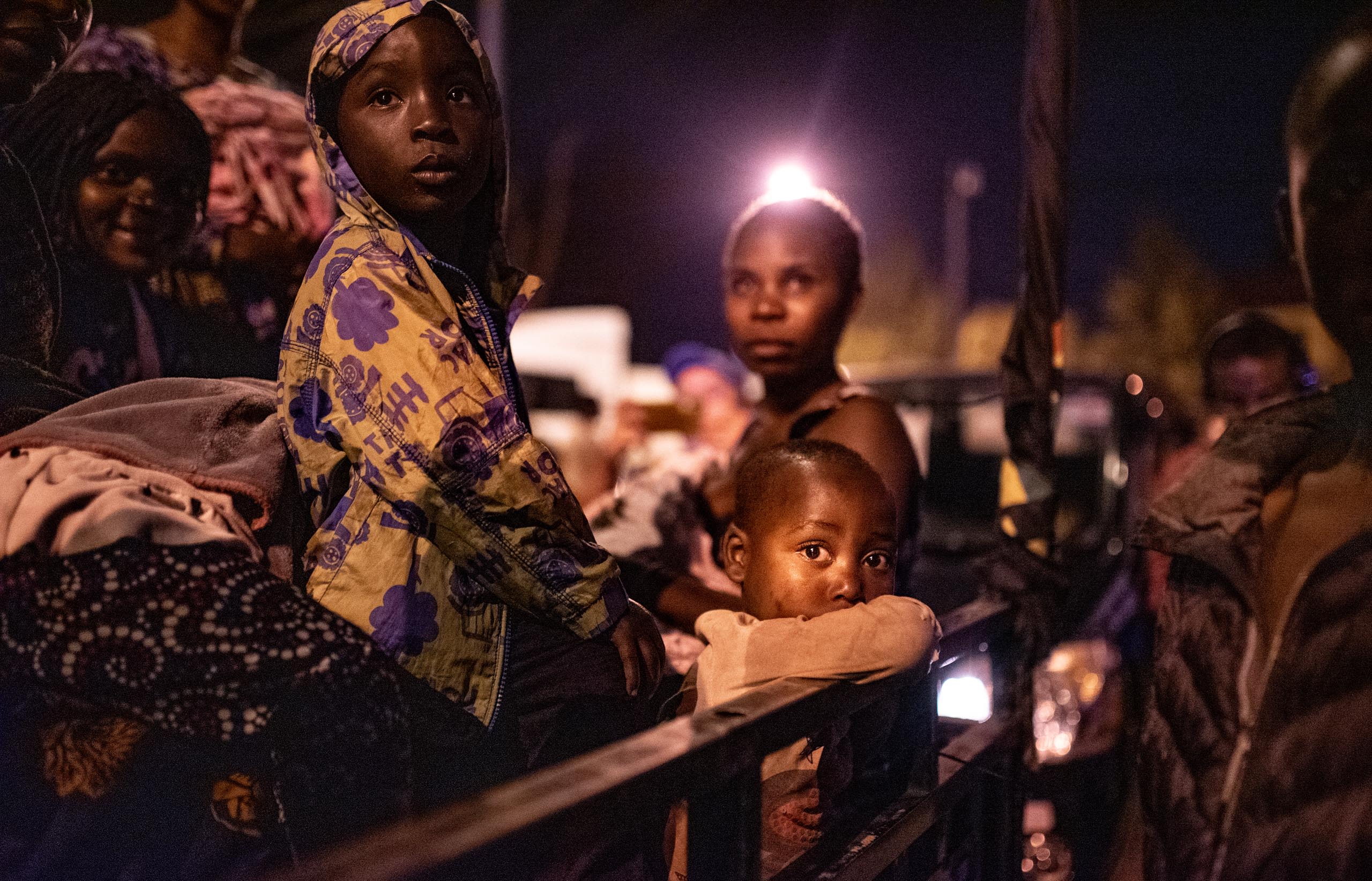
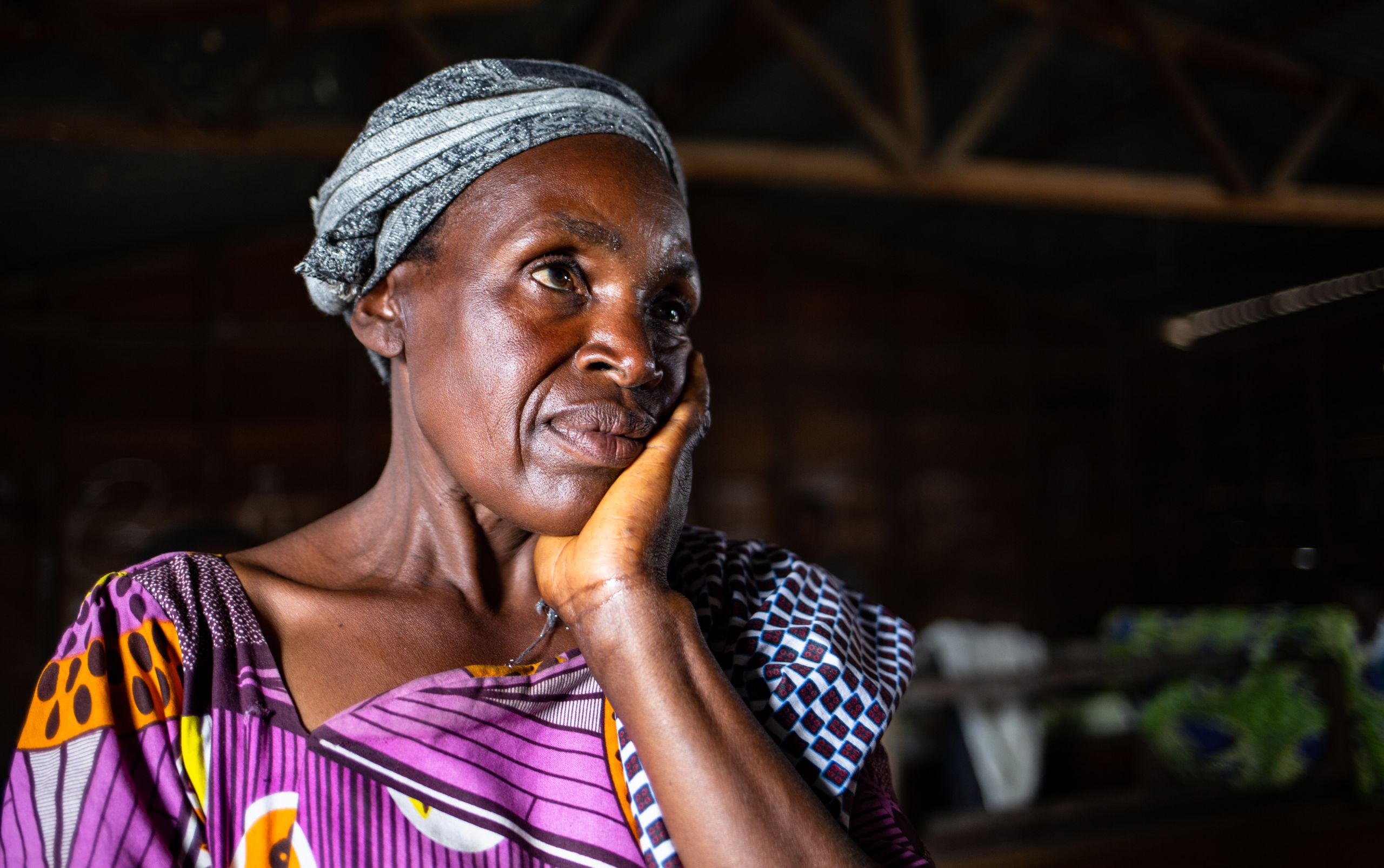
Ethiopia
Ethiopia is currently facing one of the largest and most acute internal displacement crises in the world. In the first six months of 2021, IDMC recorded 1.7 million new displacements across the country, more than four times the 369,000 displacements - or movements - from the same period last year and more than the total recorded in all of 2020. Over 4.8 million internally displaced people (IDPs) are estimated to be uprooted across the country.
The humanitarian situation in the northern regions of Tigray, Amhara, and Afar is dire and likely to aggravate further in the second half of 2021, as the conflict spreads into other regions. Intense fighting and widespread violence have destroyed entire villages and displaced more than 1 million people. On top of losing their homes, people have lost access to livelihoods, and schools and hospitals have been severely damaged or occupied by armed groups.
The crisis is becoming increasingly complex with both state and non-state armed groups involved in the conflict. A preliminary analysis conducted by the UN Human Rights Office highlighted that multiple parties to the conflict committed serious violations of international law, which may amount to war crimes and crimes against humanity. Renewed border disputes and inter-ethnic tensions have further inflamed violence and massacres in the Amhara, Oromia, and Benishangul Gumuz regions, where hundreds of thousands have also been displaced.
Humanitarian access constraints persist, particularly in Tigray, and several humanitarian convoys were attacked in the first half of 2021. Conflict and floods have also severely disrupted agricultural activities and farmers have missed the last harvest and planting seasons. As a result, about 400,000 people are facing famine in Tigray, while millions of others are suffering from severe food insecurity.
Internally displaced people bear the brunt of the suffering as half of IDP sites have had no or limited food distributions in recent months. Among them, children and youth have been disproportionately affected, representing more than 40% of all the displaced in Tigray, Amhara, and Afar. This has major implications for their future as only 15% of IDP sites have access to primary schools. Displaced populations, particularly children, are also in need of mental health support after experiencing the trauma of ongoing human rights violations, separation from their homes and destruction brought about by the conflict.
The Tigray crisis continues to expand and evolve. Ongoing efforts to reach ceasefires and a negotiated political solution have stagnated, weakening the prospects for durable solutions for IDPs.
Background photo: People displaced by fighting in Ethiopia’s Tigray region seek refuge at a camp just across the border in eastern Sudan. © Ingebjørg Kårstad/NRC
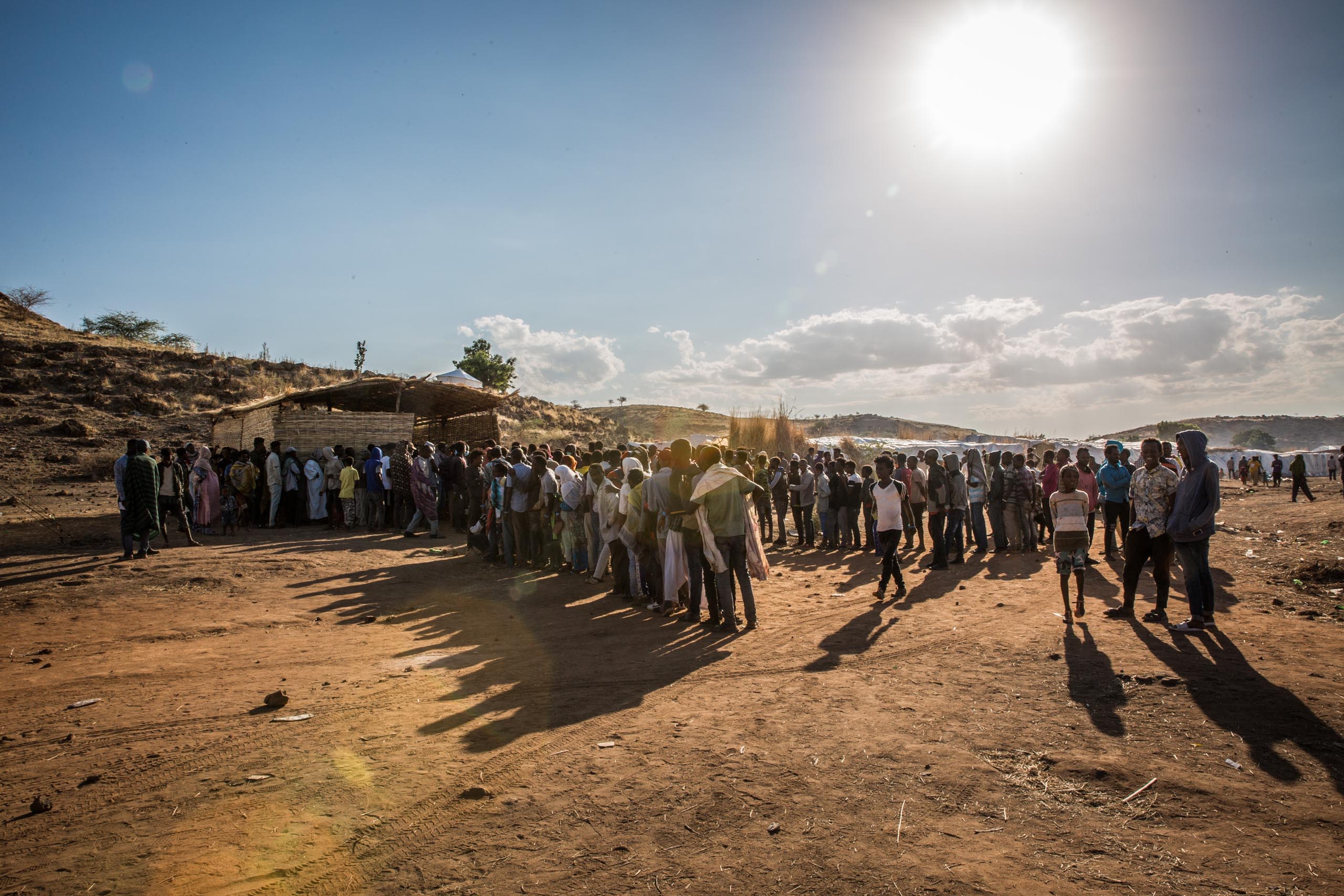
Haiti
Haiti has been experiencing civil unrest and a deteriorating security situation since mid-2018. Between January and June 2021, gang violence triggered at least 17,000 new displacements in the metropolitan area of Port-au-Prince – a sharp increase compared to 2019 (2,100) and 2020 (7,900). This figure is likely to be an underestimate, however, as it does not capture the situation in other parts of the country. The significant rise in gang violence has resulted in civilians being threatened, injured, sexually assaulted, or killed, and homes being looted and burned. Gangs are now believed to control a significant portion of Haiti’s territory.
Internally displaced people sheltered in organised and spontaneous IDP sites are heavily reliant on humanitarian assistance to meet their basic needs. The Covid-19 pandemic poses additional challenges to the safety of IDPs, particularly those in overcrowded sites. Moreover, gang-related shootings and roadblocks have paralysed the economy, interrupted movements, and restricted essential food, medicine, and fuel supplies.
As of mid-June, the displaced population included at least 5,695 women and 5,984 children. Elderly people and persons with disabilities account for more than 15% of IDPs. Among them are hundreds of persons with disabilities who had been displaced by the 2010 earthquake, and who were displaced a second time when a group of armed individuals set fire to Camp Lapiste, where they had been staying. They are now living in overcrowded and unsanitary conditions in a school and a church.
More recently, the assassination of Haiti’s President, Jovenel Moïse, in July further hindered the country’s governability. In addition, a 7.2 magnitude earthquake struck the south of the country on 14 August, causing high levels of damage and destruction. Preliminary estimates point at over 152,000 people displaced, as at least 37,300 homes have been destroyed, but figures are still being verified and could be much higher. The Atlantic hurricane season, which normally runs from June to November, increases the risk of further displacement.
Background image: A woman walks past tire barricades set ablaze by demonstrators during protests in Port-au-Prince against Haitian President Jovenel Moise. © Hector Retamal/AFP
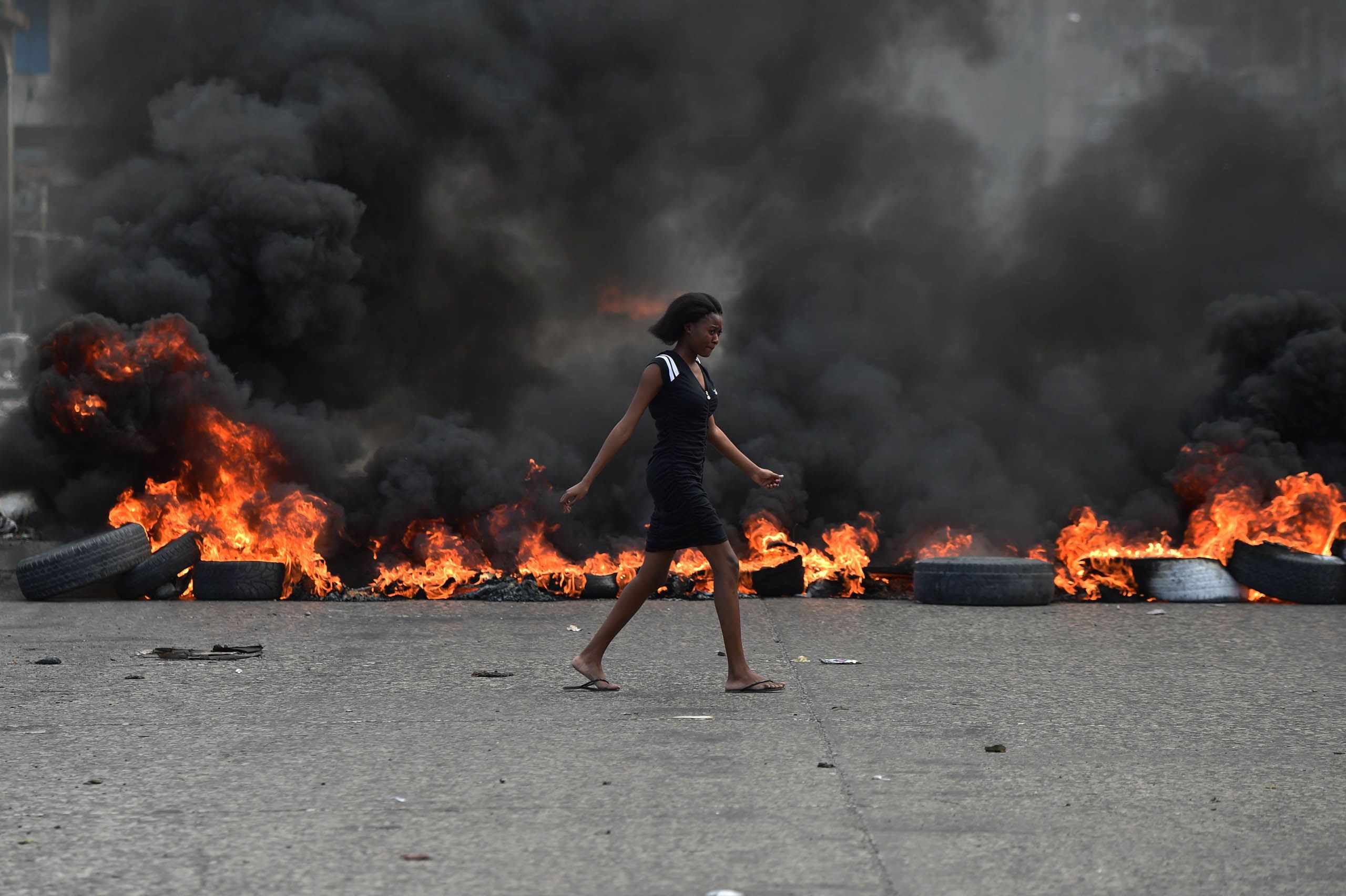
Indonesia
During the first half of 2021, 557,000 new disaster displacements were recorded in Indonesia, the majority of which were triggered by floods. This represents an increase of nearly 50,000 on the same period in 2020. Two flood events were particularly notable: one in South Kalimantan province in January, and the other on the island of Java in February. Both incidents occurred in the last two months of the rainy season (November-March), which was exacerbated by a strong La Niña that brought on between 20-40% more rainfall than usual.
In South Kalimantan, an estimated 190,000 new displacements were triggered by floods in 11 regencies/cities between 12 - 16 January, making it the first major flood in the province in the past fifty years. In response, the government declared a state of emergency, provided stipends to those whose homes were damaged, and set up a task force for the post-disaster rehabilitation and reconstruction efforts.
In Java, a series of floods affected West, East, and Central Java, Banten, and Jakarta in February, which led to 161,000 new displacements. Around 88% occurred in West Java after the Citarum River embankment broke. These areas were badly affected by the Covid-19 pandemic, which made the provision of assistance challenging.
High levels of disaster displacement are reported each year in Indonesia, but rainfall is not the only driver. Human activities, including deforestation, land degradation and unsustainable urbanisation, are increasing flood displacement risk. In South Kalimantan, the loss of forest coverage due to mining and plantation activities has reduced the region's ability to absorb heavy rainfall. Over the last ten years, primary and secondary forests, rice fields, and shrubs have decreased. Illegal pumping of groundwater has made Greater Jakarta Area more prone to flooding. Due to the high risk of urban flooding and sea level rise, plans to relocate the capital are under discussion.
More flooding is expected to take place in the remainder of the year, especially from November onwards when the rainy season starts, which could result in further displacement.
Background image: People try to salvage their belongings after heavy rain causes severe flooding in Jakarta. © Ed Wray/Getty Images
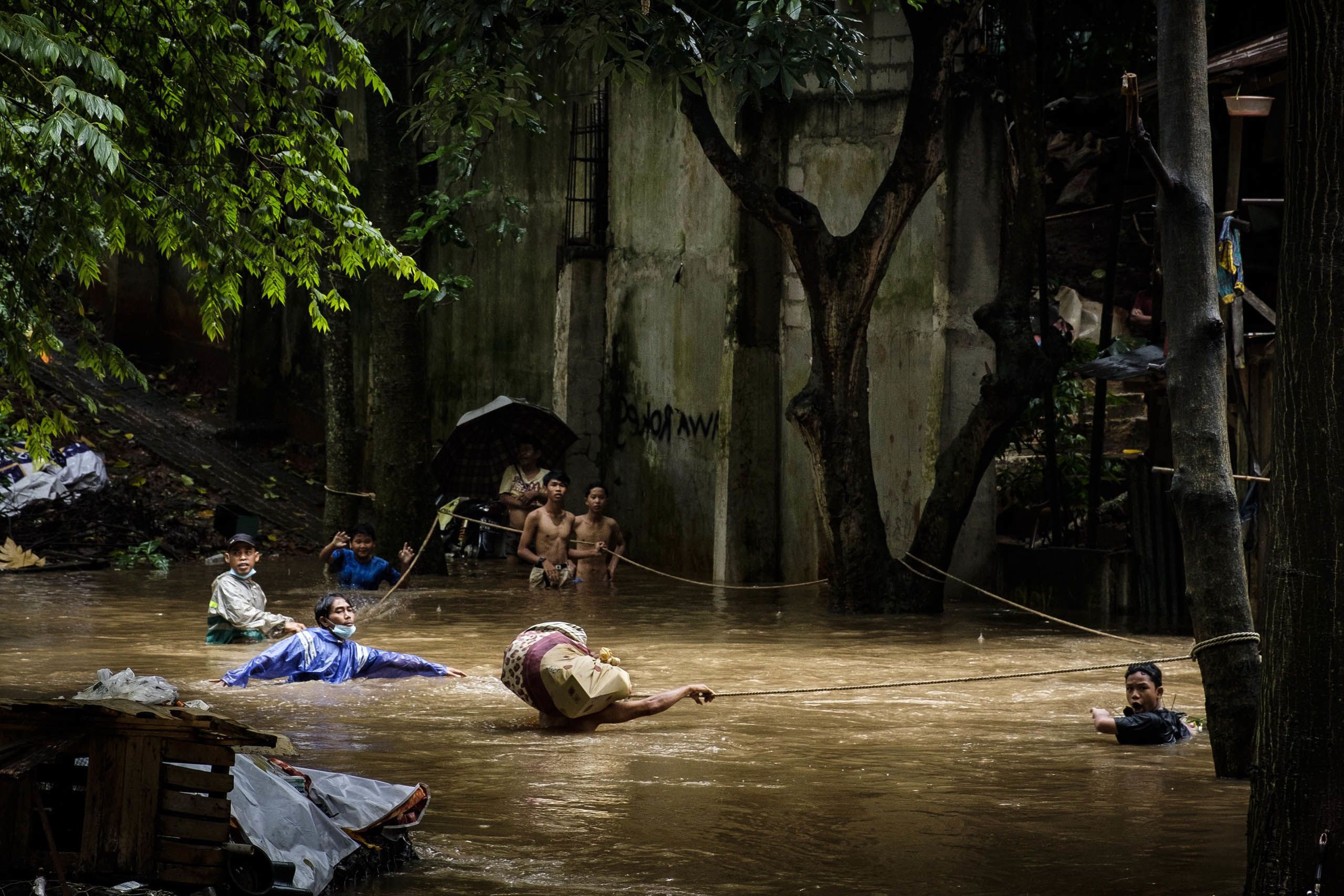
Mozambique
Internal displacement in Mozambique reached an all-time high during the first half of 2021, as a series of violent events forced entire communities to flee, some people more than four times in the span of a few weeks. More than 137,000 new displacements were recorded between January and June, the majority in the northern Cabo Delgado province, where more than a third of its population is now internally displaced.
Towns that had previously served as destinations for internally displaced people (IDPs), such as Palma, Pemba, and Moçimboa da Praia, were attacked by non-state armed groups (NSAGs) in the first half of the year. Violence also became more concentrated in urban areas compared to previous years when rural areas were targeted. This added a new dimension to the displacement crisis and highlights the increased capacity of NSAGs to carry out more complex attacks in urban centres.
A series of attacks in Palma since 24 March resulted in nearly 100,000 new displacements, almost half of which involved children. Tens of thousands remain trapped in the district, facing a constant threat of violence and insecurity. Some IDPs are fleeing further south by boat, bus, or foot, seeking shelter with host communities or in makeshift camps. The attacks also resulted in cross-border flight into neighbouring Tanzania. However, some 10,000 Mozambicans have been forcibly returned from Tanzania to Cabo Delgado province, where a majority is likely to be living in a situation of internal displacement. The increasing number of people who have lost access to their livelihood activities when uprooted is driving acute food insecurity across the northern province.
Mozambique was also widely affected by disasters in the first six months of the year. Tropical storm Chalane (December 2020 - January 2021) swept through the country’s central provinces of Sofala and Manica. The storm caused severe material damage to homes and shelters, especially in resettlement sites hosting IDPs displaced by cyclones Idai and Kenneth in 2019, among others. In late January, tropical cyclone Eloise made landfall on the country’s central and southern regions, displacing more than 43,300 people.
These compounding conflict and disaster shocks have made the situation in Mozambique critical. The international community has voiced significant concerns over the evolving humanitarian crisis. Following months of negotiations, the Southern African Development Community announced in June the deployment of a standby force to the north of the country in response to the growing insecurity.
Background image 1: Atija is a student in the seventh grade. She was uprooted by armed conflict in Cabo Delgado province, fleeing to Ibo Island. © UNICEF
Background image 2: Camp for internally displaced people in Metuge, Cabo Delgado. © UNICEF
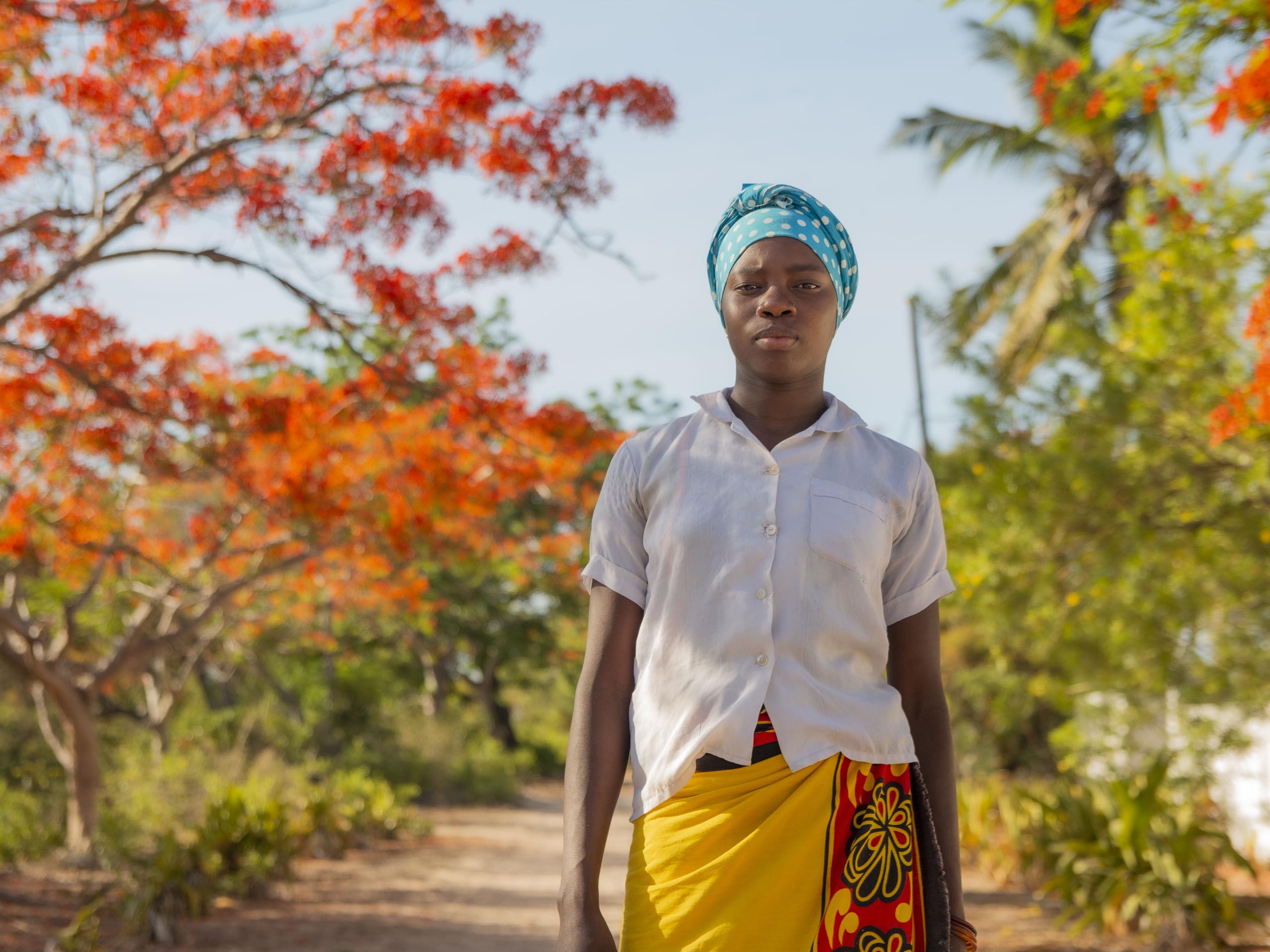
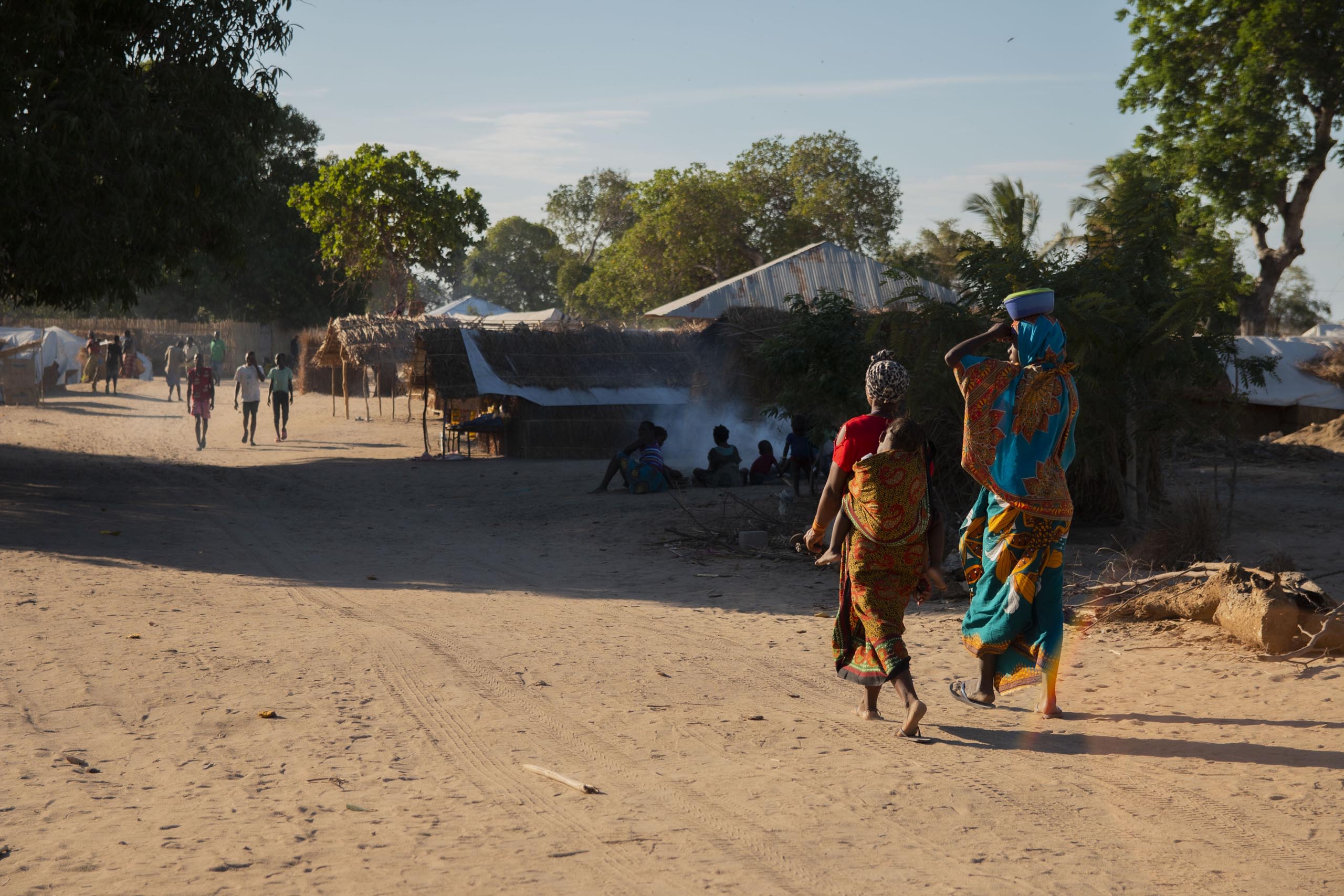
Myanmar
The Myanmar Armed Forces (MAF) carried out a coup on 1 February, overthrowing the country's democratically elected government. As a result, violence increased across the country, changing the scale and patterns of displacement seen in recent years. Between January and June, an estimated 239,000 people were displaced due to conflict and insecurity, the majority of whom fled violence that erupted since the coup. This estimate is three times higher than the figure IDMC reported for the whole of 2020.
Armed resistance to the State Administration Council led to the formation of local People's Defence Forces which clashed with the MAF, displacing people across several states, including in previously unaffected areas. In Kayah State, where no conflict-related displacement has ever been recorded, clashes that began in May uprooted nearly 104,000 people, making it the country's largest displacement event in 2021 so far. The true scale and impact of displacement is unknown, however, due to restrictions on media and highly constrained humanitarian access enforced since the coup.
An escalation of the country's long-running ethnic conflicts has also contributed to a surge in internal displacement. In Shan State, conflict has spread from northern to southern areas, with displacements recorded for the first time in Kyethi and Mongkaing townships in June. The largest incidents of displacement have occurred in the Southeast region, particularly Kayin State and Bago Region, where conflict between the MAF and the Karen National Union escalated in March, leading to more than 40,000 displacements, mostly in Hpapun Township.
While fighting has mostly affected small townships and rural areas, urban areas are increasingly at risk as armed resistance continues. The prospect for internally displaced people (IDPs) to return home is low, especially in the southeast where displacement continues to rise, and in Kachin where 87% of those displaced since mid-March remained uprooted in June. With limited access to humanitarian assistance, most IDPs are sheltering in forests, churches or monasteries. The insecurity, alongside the prevailing economic crisis in the country, has also worsened food availability in both urban and rural areas and disrupted livelihoods. Without a dramatic change in the situation, the UN High Commissioner for Human Rights has warned that Myanmar is approaching state failure and at risk of broad civil war.
Background image: Smoke rises from tires burning at barricades erected by protesters in Yangon, as the military junta continues a brutal crackdown on civil disobedience. © Stringer/Getty Images
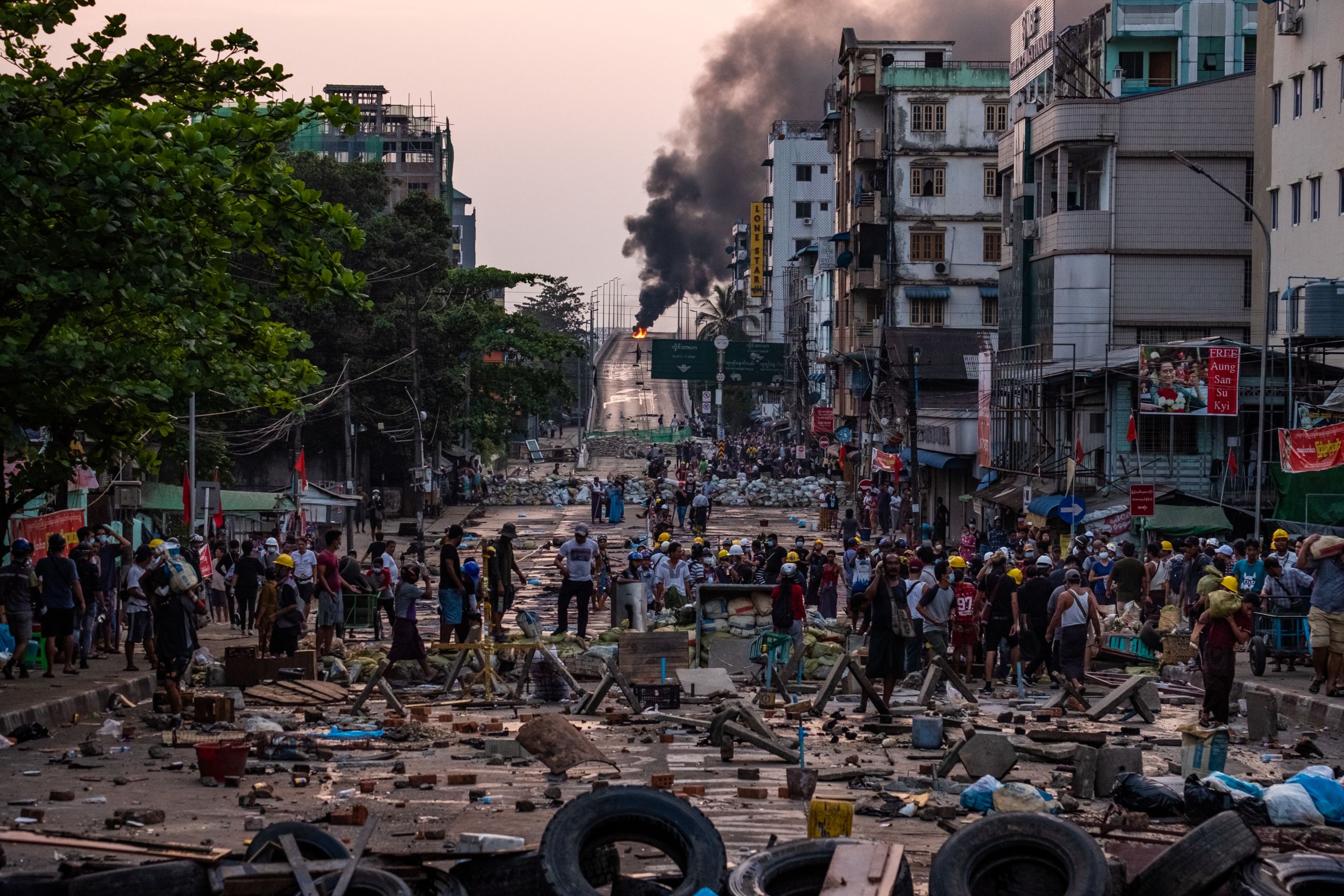
Nigeria
Nigeria continues to accommodate the largest population of internally displaced people (IDPs) in West Africa, largely due to the armed insurgency in the northeast of the country that started more than a decade ago. The security situation deteriorated in the first half of 2021, affecting most of the northern regions. Violence is spreading to areas previously spared from conflict which have historically served as a refuge for IDPs. Between January and June, around 294,000 new displacements were reported, a significant increase on the 169,000 displacements recorded for the whole of 2020.
The northeastern state of Borno has suffered the brunt of the violence and many IDPs have been forced into secondary or tertiary displacements. The most significant attack took place in Dikwa Local Government Area in March, forcing more than 23,000 people to flee their homes. The situation in Borno was further exacerbated when floodwaters damaged shelters between June – August, uprooting tens of thousands of people previously displaced by conflict. The growing insecurity and displacement in Borno raise concerns over the relocations and returns to the region from IDP camps which have been ongoing over the past year.
The largest displacement event in the first six months of the year took place in the northeastern state of Yobe in April. Up to 180,000 people in Geidam town, the majority of whom were women and children, were forced to flee their homes following multiple attacks by armed groups. As many as 120,000 were thought to have returned by 21 July but insecurity persisted. The security conditions in Borno, Adamawa, and Yobe states have rendered humanitarian access highly challenging, forcing some organisations to close their operations. Attacks have continued unabated, forcing thousands of people to flee across the border towards Niger. IDPs in the northeast also suffer from high levels of food insecurity and a high risk of communicable diseases and gender-based violence.
Displacements are expected to continue in the months to come with the ongoing seasonal rains and the spread of security incidents across the northern and central states of the country. The latest attack in the context of intercommunal and criminal violence in the central state of Plateau in early August displaced over 15,000 people.
Background image: Naomi’s shop was destroyed and she ran away from home with only a small bag. Today, she supports herself with petty trading. © Samuel Jegede Oluwaseun/NRC
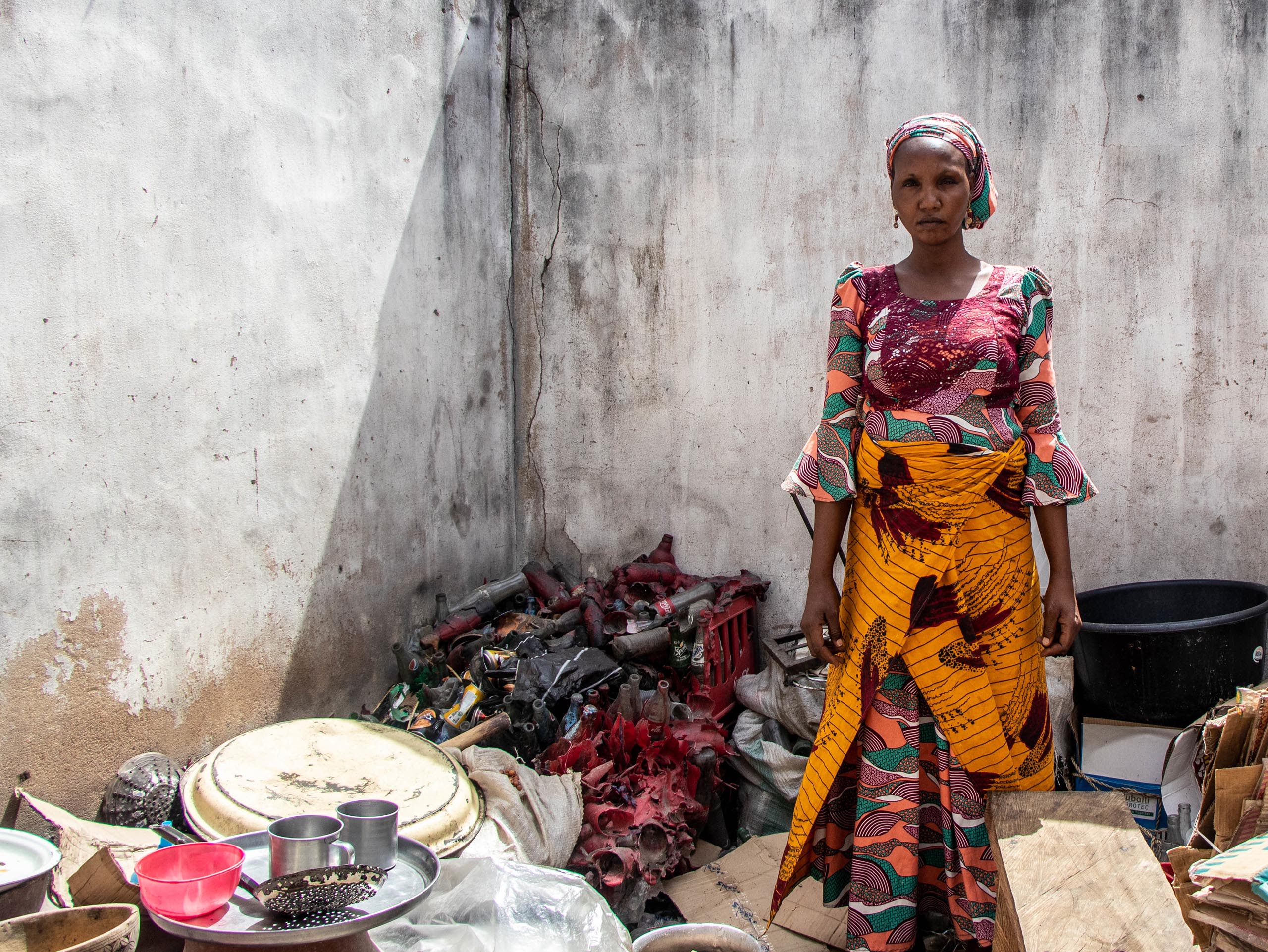
Palestine
Hostilities between Israelis and Palestinians intensified in May, becoming one of the most significant escalations of violence and triggering the largest wave of internal displacement since 2014. After weeks of rising tensions in East Jerusalem, including over the threat of eviction of Palestinian families in the neighbourhood of Sheikh Jarrah, a deadly military confrontation between Hamas and the Israeli Defense Forces broke out.
The humanitarian impact of the airstrikes was severe. In the Gaza Strip, 1,255 houses were destroyed and 20,000 housing units, 141 education facilities, nine hospitals, and water and sanitation networks were damaged. At the height of the hostilities (10-20 May), 113,000 people were displaced in the Gaza Strip, of which 71,000 sought shelter and protection at 59 UNRWA schools while others stayed with host families. Thousands of Israelis also temporarily evacuated to shelters, and some remained displaced for about two weeks. This latest wave of violence further exacerbated an existing mental health crisis in Palestine, as many people, and particularly internally displaced people (IDPs) and children, were severely traumatised by the violence and devastation they witnessed.
The recent wave of violence occurred as the Gaza Strip was in an already precarious humanitarian situation facing shortages of electricity, medical supplies, and limited access to livelihoods. The outbreak of the Covid-19 pandemic put additional pressure on existing medical infrastructure. While a ceasefire came into force on 21 May, easing tensions, the ongoing blockade on the Gaza Strip, the closure of some border crossings, and restrictions on aid delivery limited the ability of humanitarian actors to respond.
The latest escalation more than doubled the number of IDPs in Gaza from 4,000 before the attacks to 8,200 by 28 July. As of 15 August, 886 people, including 495 children, have been displaced in the West Bank since their houses were demolished by Israeli authorities for either lacking building permits, which are nearly impossible to obtain, as punitive measures or due to other military activities.
As the humanitarian situation in Palestine continues to deteriorate, and as violence, protests, clashes, and evictions increase across Palestine and Israel, there is a growing need for a return to peace negotiations.
Background image: A man inspects the ruins of Al Jawhara Tower in Gaza City after it was bombed. © M. Hajjar/NRC
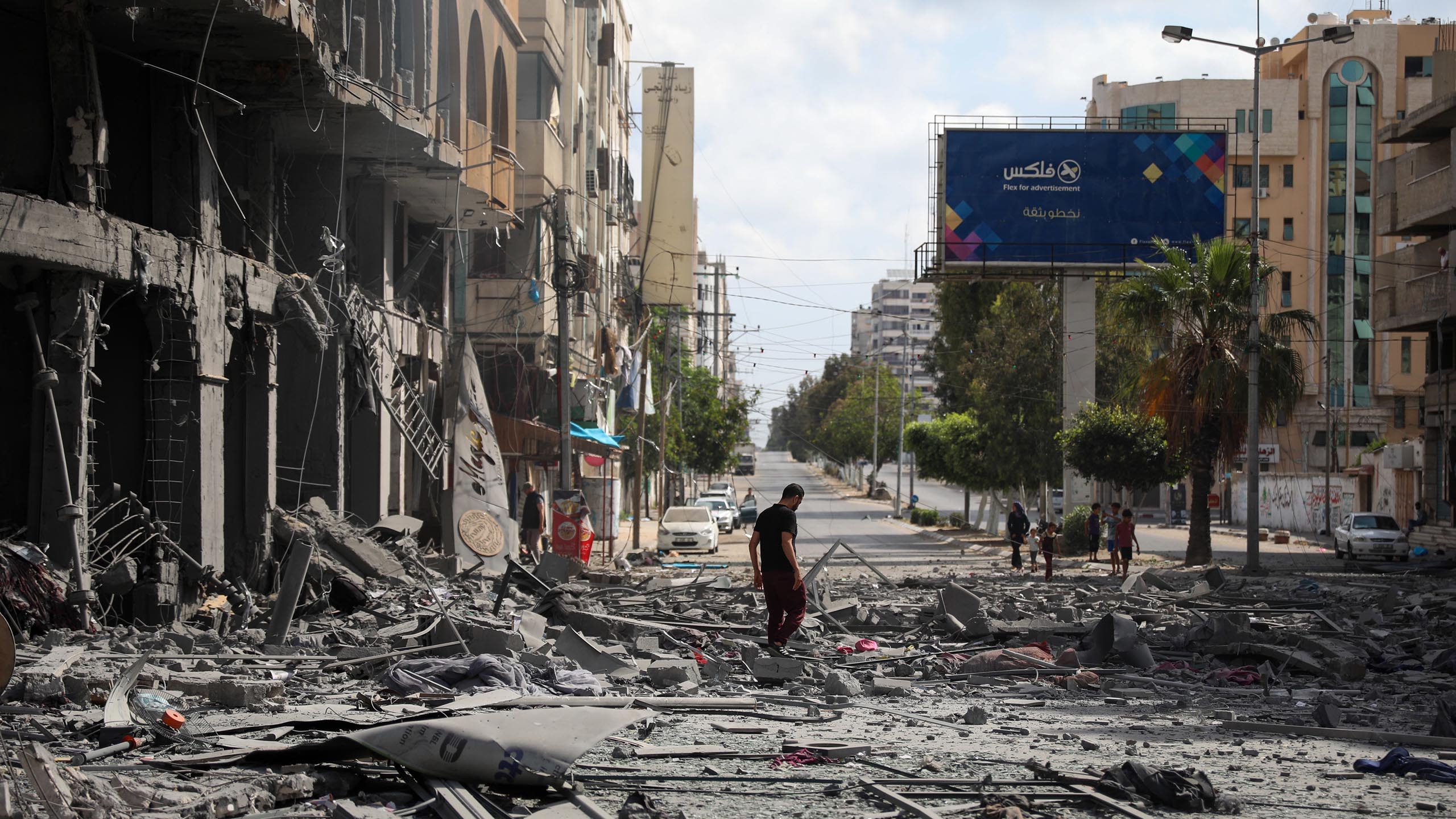
The United States and Canada
The western parts of the United States and Canada experienced unprecedented heatwaves, drought, and wildfires in the first half of 2021. A heatwave in June led to record-breaking temperatures, from the low 40s in Seattle and Portland, to over 50 degrees Celsius in Palm Springs. It extended into Canada, where Lytton town in British Columbia reached the country’s highest-ever temperature of 49.6°C.
Residents of the Pacific Northwest are not equipped to handle such extreme temperatures, and many were forced to seek cooler shelter outside of their homes. In Multnomah County, Oregon, for instance, at least 373 people sought protection in three cooling stations opened on 26-30 June. The homeless are especially at risk of displacement and harm from heatwaves, which can be relentless on the streets. The extreme heat was also responsible for hundreds of deaths, including around 200 in the states of Washington and Oregon, and a further 500 in British Columbia.
Climate.gov animation based on National Oceanic and Atmospheric Administration (NOAA)’s Real-Time Mesoscale Analysis data.
Climate.gov animation based on National Oceanic and Atmospheric Administration (NOAA)’s Real-Time Mesoscale Analysis data.
The heatwave which continued throughout the summer exacerbated drought conditions in both the United States and Canada, putting a strain on the electricity grid in certain areas and inducing power outages. The drought has taken a toll on many other aspects of life, including access to water, loss of biodiversity, food production and livelihoods, particularly those in the agricultural sector where modern industrial agriculture has a high reliance upon irrigation.
Drought conditions have, in turn, increased the risk of wildfires. In the first half of the year, 2,611 wildfires occurred throughout Canada, burning 386,050 hectares. In this period, IDMC recorded nearly 1,800 new displacements associated with seven wildfires in the provinces of British Columbia, Saskatchewan, Alberta, and Manitoba. Most notable among these was the Lytton wildfire in British Columbia, which decimated 90% of the village and displaced over 1,000 people in the area.
In the United States, 30,626 wildfires were reported, burning more than 1.4 million acres of land. At least 13,000 new displacements were recorded as a result of 19 wildfires across eight states in the west. By the end of June, 47 large fires remained active, primarily in the states affected by the drought.
The Telegraph Fire was the largest recorded in this period, which burned over 180,000 acres and displaced up to 4,200 residents of Arizona, who were under a mandatory evacuation order as of 15 June. Since then, wildfires have continued to trigger displacement in the west. Between 1 July and 15 August, over 73,000 new displacements were triggered by eleven wildfires, a period that witnessed the largest fires of the season. This includes the Dixie Fire in California, which burned over 550,000 acres and triggered up to 47,000 new displacements, as of mid-August.
A further loss of housing, a rise in displacement and even deaths can be expected during the remainder of the wildfire season, which in 2020 lasted until December in the United States. Wildfires may also compound other hazards, further increasing the risk of disaster displacement. For instance, in January 2021, some 15,000 people were displaced in the Santa Cruz Mountains, California, following mandatory pre-emptive evacuation orders after heavy rains. The 2020 wildfires burned much of the vegetation that would have otherwise diminished flash floods and landslides.
In addition, population density and land development are among the factors that increase displacement risk. People continue to move into drought and wildfire-prone areas and many communities are reluctant to adopt restrictions on development in these areas. Furthermore, as homes are increasingly built near forests and other types of natural vegetation, they are also more exposed to fire risk.
Background image: The Palisades wildfire burns out of control near homes above Topanga Canyon Boulevard in Los Angeles. © Gina Ferazzi/Los Angeles Times via Getty Images
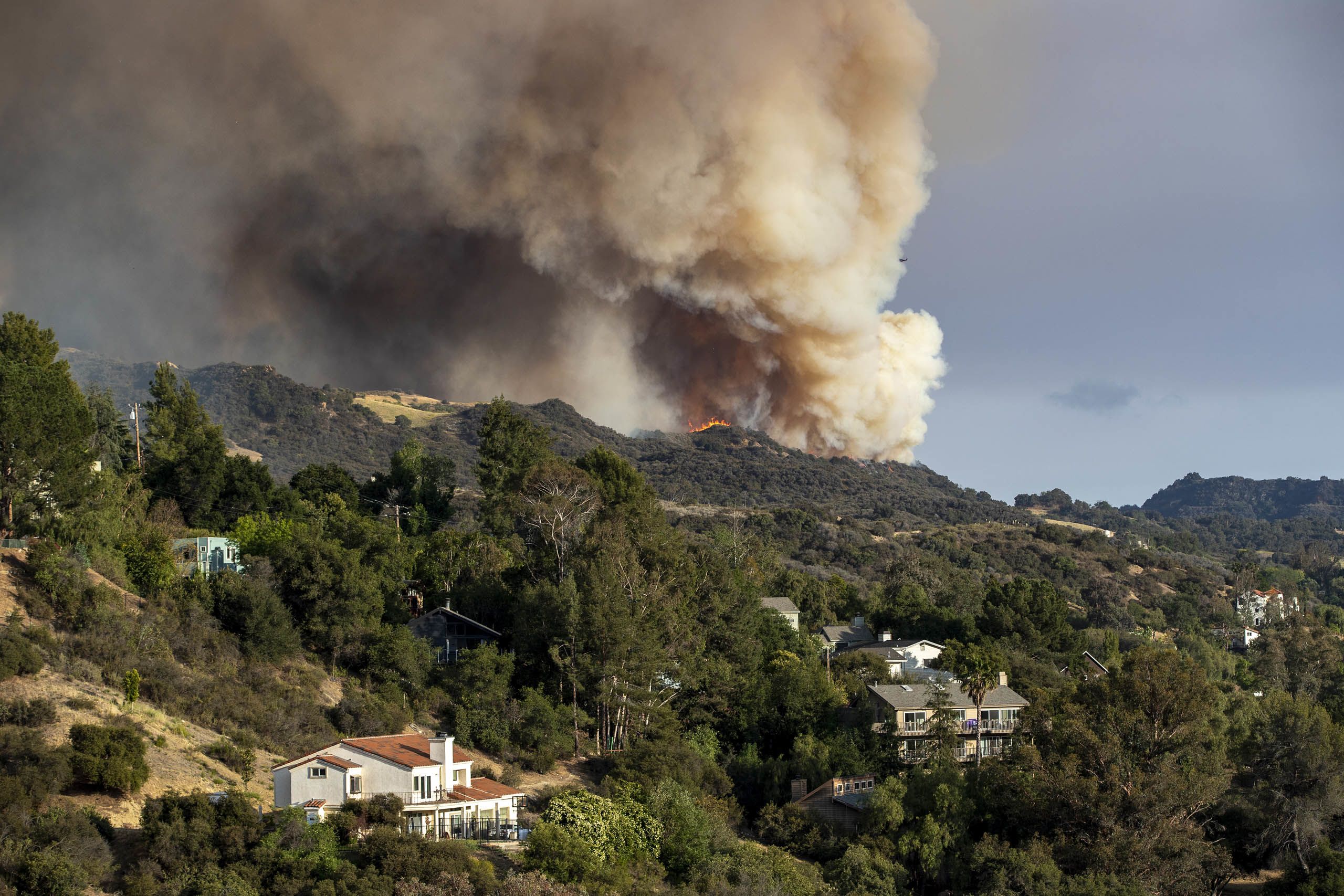
Looking ahead
Although these were some of the most notable events in the first half of the year, conflict and disasters have had equally devastating effects for people and communities elsewhere. At least 4,000 people, a quarter of them children, are reported to have fled drought conditions in southern Madagascar, where food insecurity is increasing. In Asia, the typhoon season is expected to displace a high number of people over the coming months. It follows a particularly rainy summer, during which millions were uprooted, especially in China. Across the Caribbean Basin and the Gulf of Mexico, the first major storms of this year’s hurricane season are already making landfall and causing people to flee. Particular attention should be paid to countries that are still recovering from last year’s record-breaking hurricane season.
Many situations of conflict and violence are also unravelling and triggering high levels of displacement. This is the case in countries across the Sahel, which are experiencing the compounding impacts of land erosion, land degradation, and conflict. Protracted crises like Somalia and Yemen continue to fuel new displacement and prevent millions of people from returning home.
As many situations continue to unfold, humanitarian and development assistance will remain essential to support the needs of the displaced and reduce the risk of future displacement. As the Covid-19 pandemic has exacerbated the vulnerabilities of IDPs, lasting solutions are needed now more than ever.
Follow IDMC’s daily updates on these and more displacement situations via its internal displacement updates here.
How to understand our data
IDMC and our partners report two different metrics on internal displacement: The number of people displaced and the number of new displacements, which refer to movements. For instance, if a family of four is displaced twice, this is reported as eight new displacements.
Displacement figures provided for the period January - June were triangulated and validated by IDMC. Some of the figures, however, are only partial due to the time and geographical scope covered, as well as the availability of data. Figures outside of that reporting period are published as reported by partners with a cut-off date of 15 August. Some partners update their data retrospectively, so figures may have changed by the time of publishing.

